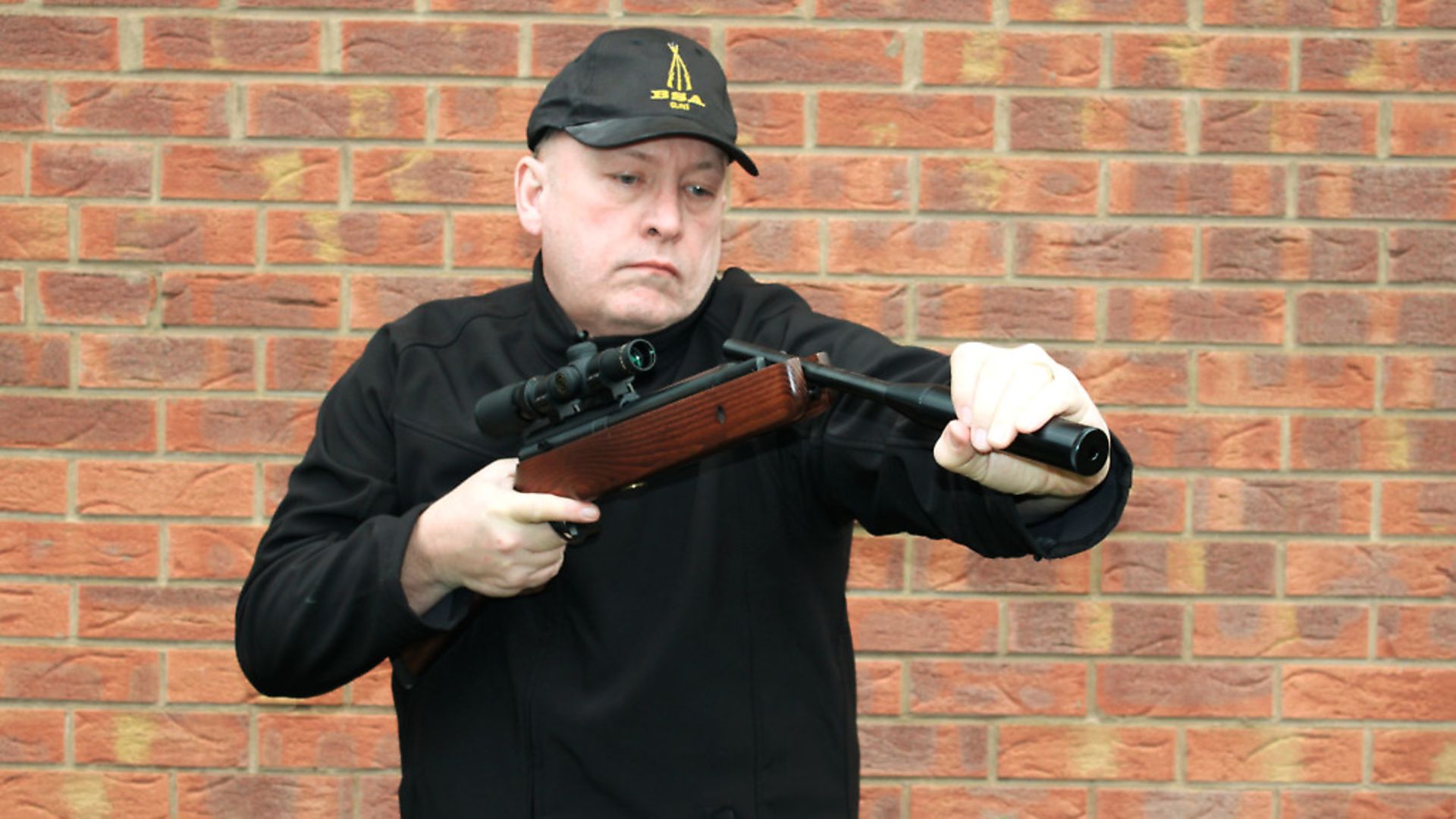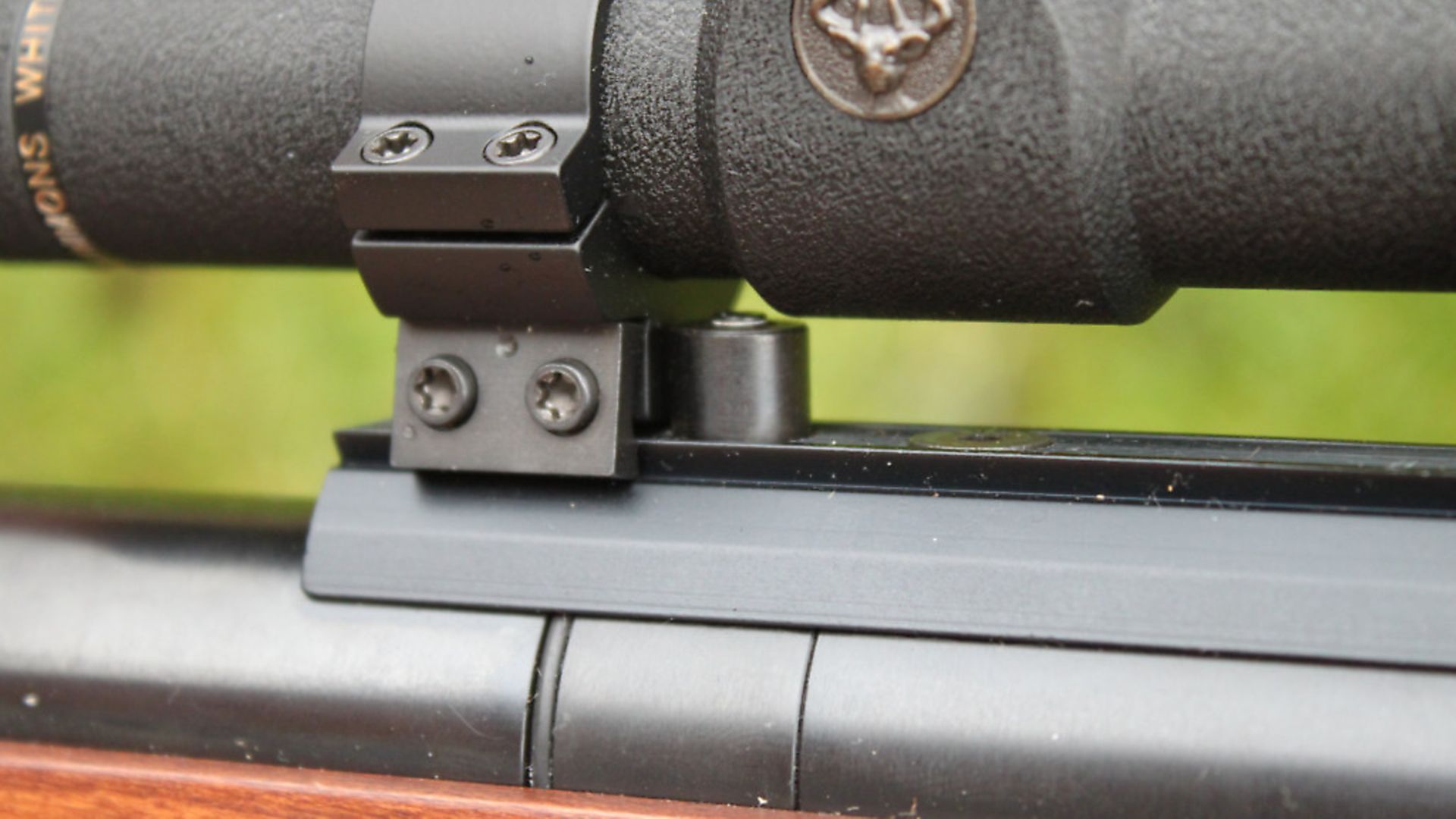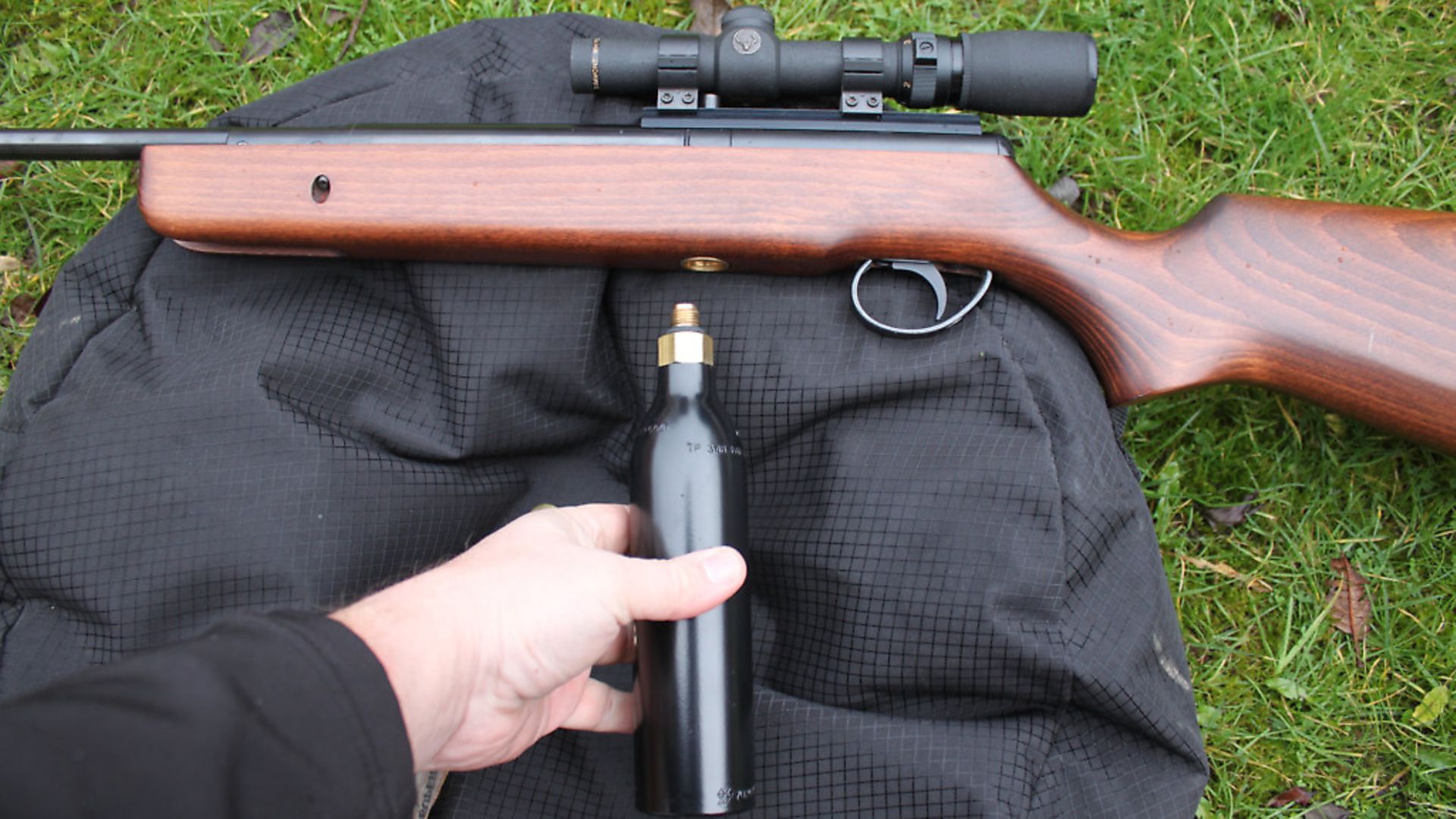Tim Finley is a fan of the BSA Spitfire of yesteryear – and for good reason
 credit: Archant
credit: Archant
I have been a BSA fan since my dad bought me a second-hand BSA Super Meteor, back when I was 13. That slab-sided stock shape and the iconic teardrop steel trigger guard still never fails to stir my heart. When BSA made the Supersport in 1986, it shared the same stock and trigger guard. Then came the subject of this article. In 1999, John Bowkett – that airgun genius who had a hand in a lot of BSA designs back then – came up with the Spitfire. It looked just like a Supersport in its first incarnation, with a long barrel and no moderator, but, and here’s the massive but, it was not a spring-powered, break-barrel air rifle. It may have looked just like one, but it was a pre-charged pneumatic.
John placed a compressed air chamber inside the stock and cleverly, also kept the break-barrel. You do not need to yank on the barrel because there is no spring to compress. It only swings down some 30 degrees from the horizontal, but a light tap with the palm of the hand is still needed to break the spring-loaded detent under the breech. It still has the trigger safety catch on the right-hand side of the rifle, and it loads just like a break-barrel; simply push the pellet into the breech. The barrel is sealed with an ‘O’ ring.
 credit: Archant
credit: Archant
Standard fill
The model here is my own Spitfire, I bought it in 1999 as a special order from BSA themselves. The first Spitfires were what BSA called SF or Standard Fill models. They used either a BSA Super Ten 500cc compressed air buddy bottle, or a threaded adaptor to a 232 bar air bottle to fill the gun. Under the stock there is a slotted brass dome cover, unscrew this and a brass female thread is revealed. The buddy bottle can then be screwed in to fill the gun. John did this because, once full, the gun would only give 30 or so shots in .177, 50 in .22 and 60ish in .25. This is fine for a hunting rifle, and the owner could have the small buddy bottle in their pocket or backpack. In 2000 the gun was given a shorter barrel and a Volumetric moderator, the same as the Lightning spring rifle so it then looked just like a Lightning MKI.
 credit: Archant
credit: Archant
High fill
Then also came the HF or High Fill model Spitfire. This did away with the thread for a buddy bottle and just went with a hole for a probe filler, which was now becoming common on BSA PCPs. This was in the same place under the stock and with a rotating flat brass cover. 2001 then saw the Firebird come to the market. This used the same compressed air system as the Spitfire, but had a fixed barrel and rotating breech, Cocking was accomplished with a short under-lever. My special was also in .25 calibre because I wanted it as a ratter. I fitted a Simmons Whitetail Classic 1-5x20 scope, which is perfect for such work. It has the low magnification and superb optics then associated with Simmons Whitetail Classic scopes. It has the BSA Maxigrip scope rail fitted where you need 13mm mounts – normal 11mm ones will not fit correctly. The air pressure indicator on the scope rail only gives you 25mm of the rail in front of it to place a mount, with 115mm behind, so two-piece 13mm mounts are needed on a Spitfire. Spitfires in .177 and .22 calibre are prefixed with AS on their serial number – .25s like mine have AAS. To see if the rifle is full of air it has an indicator on top of the scope rail. This steel cylinder has a black bar marked in thin white lines that rise as the gun is filled. If you can see four white lines, it’s full; down to one and it’s nearly empty.
 credit: Archant
credit: Archant
All the benefits
You still can come across Spitfire SF and HFs and they are easy to tell apart due to the probe filler on the HF. Mine still works and will put pellet on pellet at 15 yards – it’s so light and quiet, too. The shortness, too, is ideal for a ratting rifle to use around buildings. You can expect to pay £200-£300 for a good example, although I have never seen a .25 SF Spitfire up for sale, so mine could be more unique than I first imagined. They can be prone to leaks sometimes, although mine is still going strong. You can get spare seals from on-line airgun spare retailers. Also, always check the cocking system for misuse. Those who picked up a Spitfire, not knowing what it was, were prone to tug on the barrel like a spinger. Don’t dismiss the Spitfire as a failed experiment. As a hunting rifle it’s superb, very light, pointable and accurate. All the benefits of a break-barrel air rifle, but with the recoilless advantages of a PCP. It was soon overtaken by other BSA PCPs and was only in production for five or so years, but I for one am a fan.
Specification
Maker: BSA
Country of origin: UK
Model: BSA Spitfire SF (standard fill)
Manufactured: 1999-2005
Type: Pre-charged pneumatic
Barrel length: 385mm
Calibre: .177, .22, .25
Action: Break-barrel cocking
Stock: Beech Sporter
Sights: None
Trigger: Two-stage adjustable with manual safety catch
Trigger weight: 1.2kg
Overall length: 988mm
Length of pull: 350mm
Weight: 3.4kg
Features: Moderator, Scope rail, manual safety catch, and vented recoil pad